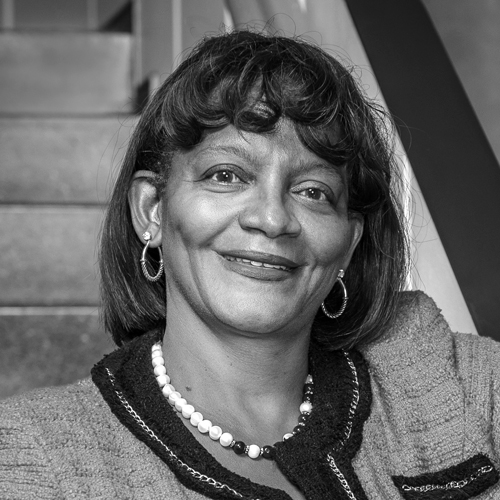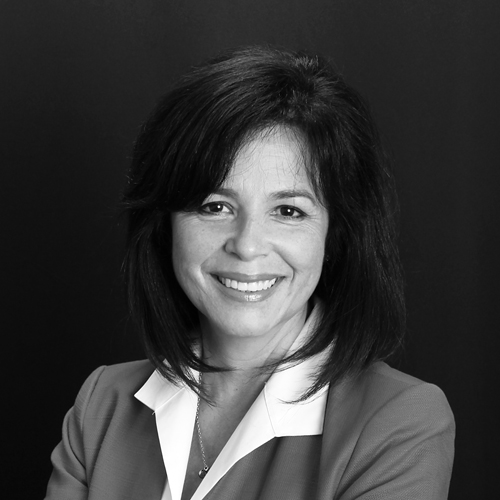Over four years ago, Amee Desjourdy walked through the doors of Global Partners LP for the first time, excited to build out a strategic HR function for the tenured oil and gas company.
Global is a midstream logistics and marketing company, known as one of the largest distributors of gasoline, distillates, residual oil, and renewable fuels in New England and New York. With a history that dates back more than seventy-five years, the company now operates under several brands and has become one of the largest owners, suppliers, and operators of gasoline stations and convenience stores in the Northeast.
Prior to Desjourdy’s arrival, HR was largely administrative, with a focus on processing payroll and benefits. As Desjourdy explains, there had never been a CHRO in place before her arrival. There was no real focus on the more strategic aspects of HR, and there was no team in place to manage talent acquisition, performance, learning, or talent development.
The organization operated generally as two distinct businesses, specifically a wholesale and commercial business, and the retail portion of the business, composed of gasoline distribution and station operations. “I looked around and said, ‘There are effectively two separate companies here. There are two separate HR departments, two separate finance departments, two separate IT functions,’” Desjourdy recalls. Bringing these two HR teams together under one umbrella was a paramount priority for Desjourdy, and the right first step in her strategic approach.
Coupled with the complexity of stitching together two HR teams, Global Partners LP announced a major acquisition two weeks before Desjourdy joined the company. This acquisition effectively doubled the size of the organization by adding an additional 1,500 employees and 150 company-operated stores to the portfolio.
Now, Desjourdy shares with Profile the blueprint for how she created an effective HR strategy that contributed to unifying the company, and what the impact is today as the strategy continues to evolve.
You came to Global Partners LP during a time of immense growth, including right before a major acquisition closed. What steps did you take to execute your HR strategy in the midst of all that change?
I often compare building an HR function to building a house. You have to lay down the foundation first before you can build any other part of the structure. If the foundation isn’t solid, nothing else that goes up after that will be either. So the first order of business was getting the basics in place. For our HR road map, the basics included first and foremost how we acquired talent. We needed to implement some consistent HR practices and protocols, and to begin executing effectively on the day-to-day. I evaluated our ability to access data related to our workforce. We also had to ensure that our managers had the support and resources to be effective in managing their day-to-day business, and could develop and grow as leaders.
Over the first year or so, I focused a lot on unifying the existing organizations. Due to the fact that we were acquiring another company, we were essentially integrating three businesses into one larger entity. In my experience, the best way to do that is to first start using common language across all three businesses, and to lead the way by modeling that behavior. Quickly, I established some ground rules within the existing HR team around the notion that we needed to function as one HR organization. This meant abandoning an “us vs. them” mentality and socializing the idea of “one HR” with the business.
In addition to the integration needed within HR, we also needed to partner with the business to integrate the existing corporate functions into centralized departments. One of the most important elements of this integration was quite simple. We issued new, standardized business cards and email addresses to ensure that all employees felt and put forward a consistent identity of the company they worked for. A basic shift like this was really important. Having a common identity can make a big impact on how people start to work together and connect around a single mission.
How did you prioritize building out the functions within HR?
The first order of business was getting the people and processes in place to be compliant with regulatory requirements and obligations. I quickly hired talent that understood how to manage our benefits and compensation programs. I began focusing on how we bring talent into the organization, and hired a person to start building out a talent acquisition team. I then hired an HR operations professional to come in and start assessing our HRIS platform and existing tools and resources so we could make an informed decision on next steps.
We decided early on that we needed to implement a new, scalable HR and payroll platform, and ultimately selected Workday. Our initial objective was limited in scope—namely, we just needed to get our hands on the data and understand the workforce. Over the past several years, we have added to the core HCM and payroll platforms and now utilize Workday for recruiting, performance management, and learning. Now that we have the data, I am seeing a shift in how the HR team and business would like to use it. It is becoming more about workforce planning, strategically and more efficiently operating the business, and assessing outcomes using metrics as opposed to just record keeping.
Once I was confident that we had an effective hiring process, we were able to turn our attention to how we were managing the talent once they were here. Global has thousands of employees in the field and in our retail locations. That dynamic creates complexity, and putting HR talent in the field, alongside, and within the business has been key.
I looked at the retail business and decided we needed to create a team of HR business partners that aligned with the regional retail team structure. That way, they could start engaging with managers and staff across all levels of management and within our stores to make sure our practices were solid, that we were educating people on how to manage their teams day-to-day, and to make sure we were getting the best out of our staff once they were on board. Now we align this way across all aspects of our business.
How has your focus changed over the past four years and how were you able to evolve the HR strategy so dramatically?
When I arrived, the emphasis in the HR department was primarily on processing paper and completing tasks. Early on, I took the time to meet with as many people as possible. As I started to get a better understanding of the business and the challenges people faced, I was able to quickly see what HR could do to enable our employees and managers to be more effective. Early on the success was in the little things. As we were able to add value, the conversations started to change. Managers would start to speak with us about a wider range of challenges and more and more opportunities would arise to become not just an administrative support person, but a real strategic partner.
Just as we are evolving from an HR perspective, our business has been evolving. We have seen an increased focus on our retail business. The retail business is about people—our employees and our customers. This has created a tremendous opportunity for the HR team. Our leaders understand that how we hire, who we hire, how we train, and how we engage our staff will have a direct effect on customer experience. That’s allowed me to continue to build on what I’ve been doing because the business has committed the support needed to continue to develop our talent management practices.
The first two years of my tenure were all about building the foundation. With that in place, we have been able to shift focus to organizational culture. Do our employees understand what success looks like at Global? Do we give them the right tools and resources to perform their work? Do they feel a connection to Global and the role they each play in contributing to our success?
Talent development has become central over the past year in support of this work. We now have a head of talent development, and we are ready to talk about continuing to evolve the performance review process, revamp how our employees are onboarded, and how we continue to connect and unify our diverse employee population around a single business strategy and mission. We are a relatively flat organization in spite of our size, and we need to create ways to grow talent, keep our people engaged, and allow them to see the career path that exists for them. One of our key areas of focus over 2019 will be developing our leaders and managers, as they are the linchpin to creating even more of this connection between our teams.
Navis brings decades of experience in developing custom programs to meet specific business goals. The Navis team was proud to work with Global Partners LP to design and develop their employee onboarding program, and congratulates Amee Desjourdy on her success.















